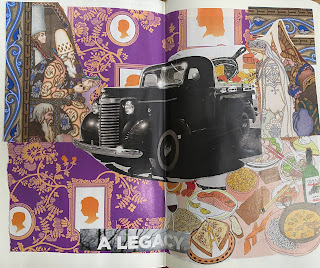Day 7 – “How to live, and how to think about how to live”
 |
| Photo by Miguel Bruna on Unsplash |
Day 7 - In the introduction to her book, Living a Feminist Life, Sara Ahmed (2017) talks about the idea that “feminism is about how to live, about a way of thinking about how to live” (p. 1). She poses feminist life as a questioning life, a question of how to live. Also, as a question of how we think about the life of those around us,
it might mean asking ethical questions about how to live better in an unjust and unequal world (in a not- feminist and antifeminist world); how to create relationships with others that are more equal; how to find ways to support those who are not supported or are less supported by social systems; how to keep coming up against histories that have become concrete, histories that have become as solid as walls. (p. 1)
I think becoming a “therapist,” of any kind, also includes this questioning. As therapists, we are prioritizing relationships. We are prioritizing well-being and social justice. And as an arts therapist, we recognize the role of the creative process and the arts as a part of relationships, well-being and justice. As arts therapists, the question of how the arts allow us to live better in an unjust and unequal world becomes part of the question.
When I ask, “how the arts allow us to live better,” I don’t mean how “we” bring the arts to the other as a way of living better!!! I want us to question this assumption that we, the therapists, are bringing the arts to the client, and particularly not to communities, both of which already have a relationship to creativity, images, and the arts – to me this is an “imperialist” arts therapy notion in which we think we are gifting the world with the arts as a healing tool, for those we serve (as Ahmed notes about imperial feminism).
Rather, the question is how does the creative process and the arts allow us to live better? And how do we listen to our clients and the communities with which we work tell us that story? And how do we open our eyes to see the ways the arts and images already make themselves available?
How do the arts help us to create relationships with others that are more equal? How do the arts support those who are not supported or less supported by social systems? How do the arts help us to question history – and our claims about the role of the arts?
I was delighted by the imagery of the “willful subject” and the “feminist killjoy” that emerged in Ahmed’s work – it seemed to me these were alive images with which she was dialoguing, playing, and seriously considering, through her questions and desire to know and recognize them in her life and the lives of those around her.
How can I do this with “expressive arts therapy?” What am I trying to recognize, know, and play with as I consider what “expressive arts therapy” means and how it is practiced?
Ahmed, S. (2017). Living a Feminist Life. Duke University Press.


Comments